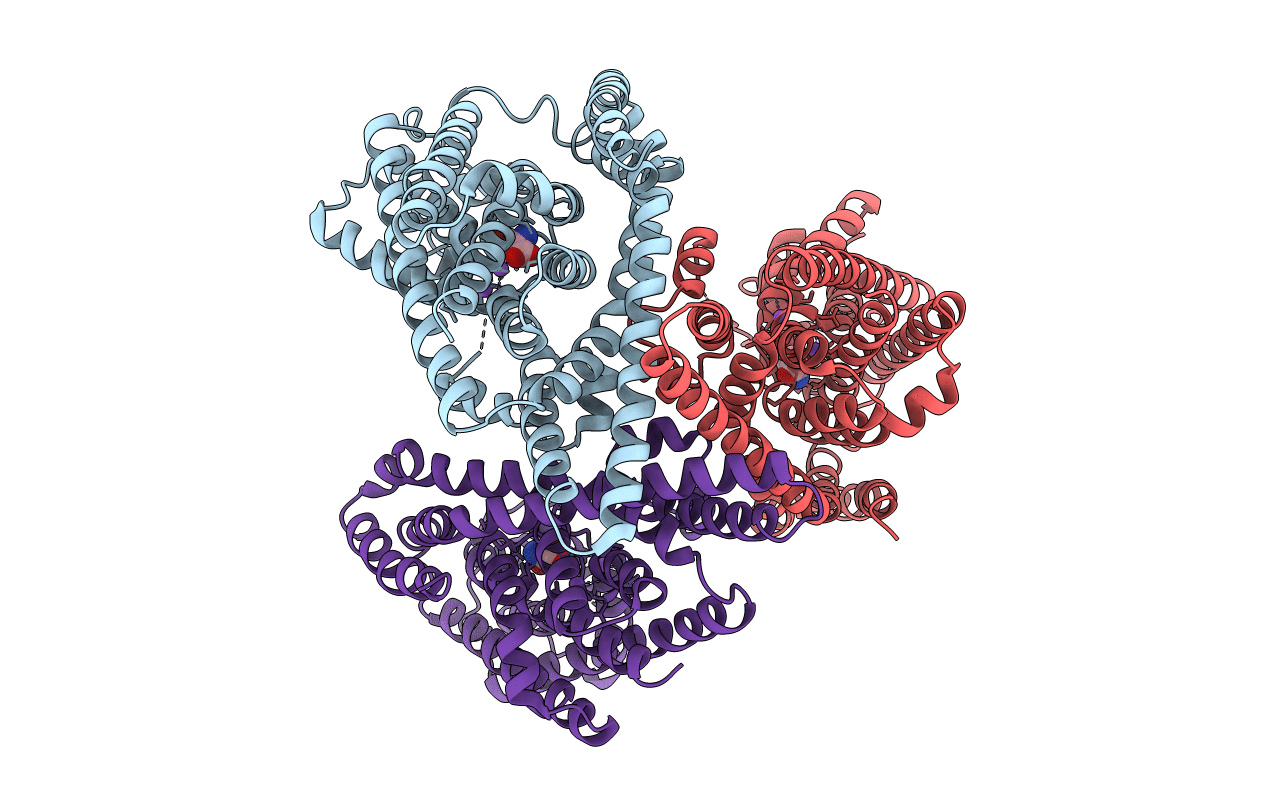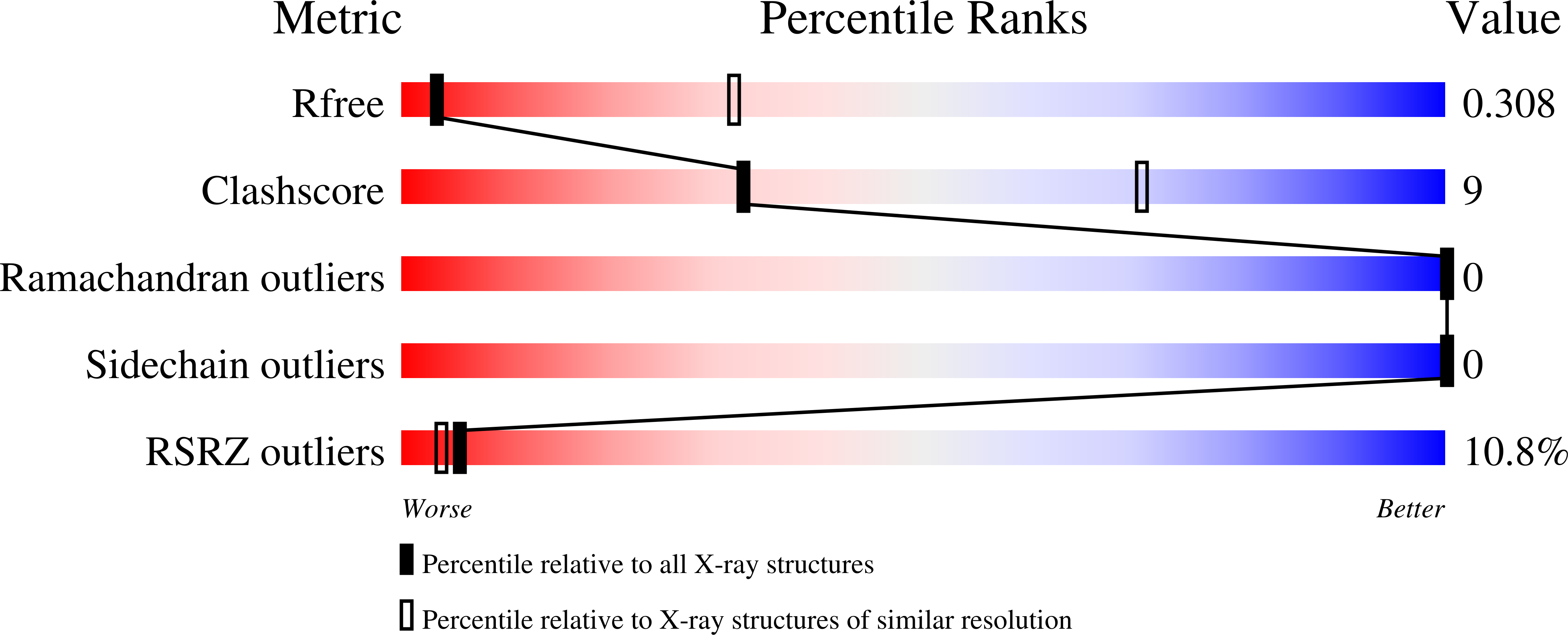
Deposition Date
2020-05-15
Release Date
2021-02-17
Last Version Date
2024-10-23
Entry Detail
PDB ID:
6X01
Keywords:
Title:
Crystal structure of the GltPh V216C-A391C mutant cross-linked in outward-facing state
Biological Source:
Source Organism:
Host Organism:
Method Details:
Experimental Method:
Resolution:
3.65 Å
R-Value Free:
0.30
R-Value Work:
0.27
R-Value Observed:
0.27
Space Group:
P 61


